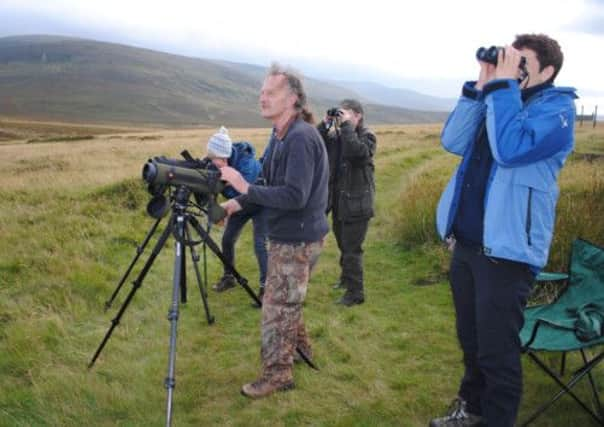Outdoors: Animal magic transforms Glenlivet Estate


It was almost imperceptible at first – but then from across the glen the distant roaring could be heard again. As our group scanned the hillside with binoculars and telescopes, three distinct groups of red deer could be seen and before our eyes one of the most spectacular events in the Scottish wildlife calendar began to unfold – the red deer rut.
There is something very special about being out and about in the Scottish mountains in autumn with the light creating ever changing patterns on the hillsides. But behind these subtle and benign elements of nature lies a testosterone-fuelled battle as our hills echo to the bellowing roar of stags engaged in the rut. The aim is simple, to try and mate with as many hinds as possible.
Advertisement
Hide AdTo do this the stag tries to round up a harem of hinds, the bigger and stronger he is, the more he can get. But it is an energy-sapping task as he continually tries to keep the hinds together and fend off other stags keen to get a slice of the action.
I was able to witness this fantastic sight by joining a group of other wildlife enthusiasts on a nature tour deep in the Ladder Hills with Glenlivet Wildlife Land Rover Safaris, which is run under the expert guidance of David Newland. When visiting an area it is always good to call upon local knowledge, and David, with his easy-going humour and deep knowledge of the wildlife and history of Glenlivet Estate, proved a perfect and entertaining host.
As well as the deer rut, we saw black grouse, buzzards and brown hares, tasted the leaves of wood sorrel, learned how the crushed leaves of bog myrtle are an effective midge deterrent, and were shown a glacial meltwater channel, as well as the intriguing parallel scars on a hillside that marked the presence of an ice lake in the distant past.
Indeed my trip to Glenlivet Estate, which is owned by The Crown Estate, underlined what a marvellous and diverse corner of Scotland this is. Around 58,000 acres in size, it comprises over 30 let farms, 3,500 acres of commercial forests and a sporting tenancy including grouse moors, salmon fishing and deer stalking. The Crown Estate has also encouraged sustainable economic development within Glenlivet, backed up by significant re-investment, a policy which has won the estate several major awards.
Earlier in the day, countryside manager Vicky Hilton gave me a whistle-stop tour of some of the highlights of the estate, and this policy of investment could not have been better illustrated than by the new mountain bike centre being created. Construction of a visitor centre is progressing well, and once completed in November, it will form the hub for two newly created mountain bike trails – one a 9km flowing blue trail suitable for novices and families, the other a more challenging 22km red grade loop with some black grade technical features.
It promises to be a major centre of attraction for biking enthusiasts and complements perfectly the numerous other waymarked bike and walking trails in the area. But biking and walking are not for everyone and one of the other great attractions for visitors is the history of the area and, of course, the whisky. For many centuries whisky distilling has been a way of life here and when small stills were made illegal in the 18th century, whisky production was relocated from farmhouse kitchens to remote hillside bothies out of reach of the authorities. The finished spirits were then loaded into casks onto ponies for the long trek over the Ladder Hills to the cities in the south. These historic whisky trails can still be seen to this day. Other historical attractions include the ruins of the 14th century Drumin Castle, which has undergone an extensive preservation programme by The Crown Estate to stabilise the buildings and create access to the site.
Advertisement
Hide AdIt would seem that managing the estate is one giant juggling act from preserving ancient ruins to developing a modern biking centre. But perhaps of even greater significance is how pro-active management and working closely with diverse interests can deliver real and tangible benefits to the local community.
“A local Tomintoul couple is going to manage our mountain bike centre and we anticipate that it will attract thousands of bikers,” says Vicky Hilton. “We have found that by working alongside the local community, it is possible to ensure that land-use such as game management and fieldsports can co-exist with activities such as walking, biking and birdwatching.”